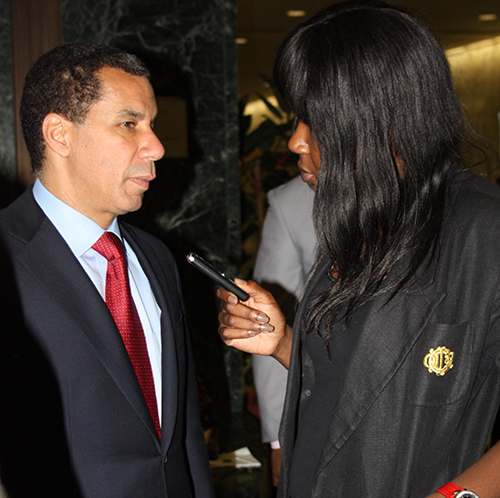By Emily Sheftman
The largest group of reporters covering New York’s capital city is often a team of students from SUNY New Paltz – a campus in the State University system. Learning about reporting and politics and legislative policy, the dozen-or-more student journalists work alongside seasoned reporters from the New York Times, New York Post, Albany Times Union, Associated Press and a score of other outlets.
“My job is fun because the students initially don’t know a thing about how a bill becomes a law,” says James Gormley, a New Paltz faculty member who doubles as the student’s teacher and editor. “So on day one, we're teaching that basic process, and then they're watching it. They learn the textbook version, and then [in Albany] they're learning the real-world version.”
Gormley enjoys watching the students turn their classroom training into what it takes to become a more skilled reporter.
“And at some point, they become pretty good at it,” Gormley said. “They know a lot more than most of the citizens of New York about how state government works. And they're starting to get interviews with senators, and the lawmakers are calling them back. It's fun to watch that progress.”

For 45 years, SUNY New Paltz has been sending students to the state Capitol to write stories for the Legislative Gazette. The original content is made available for free to readers across the empire state. About 5,000 to 6,000 people a week read the on-line news source, with stories updated September through May, Gormley said.
Students cover committee hearings, rallies and protests, press conferences and floor sessions, sometimes all in the same day, Gormley said. Students produce news videos, short documentaries and manage social media channels, in addition to producing traditional news articles.
“We can literally be at every single thing. We may not write about or produce something based on every event, but we have footage, and we have photos.” Gormley, who lives in Albany, works closely with the students through every stage of the writing and production process and does final edits before the work is posted.
In the fall and spring semesters, students ply their trade from a small newsroom in the Empire State Plaza, a hub of state offices connected directly to the statehouse through a tunnel – known as the concourse. Proximity provides access and the student newsroom is less than 1,000 feet from the offices and chambers of the legislators.
“Students attend Senate sessions, Assembly sessions and floor votes,” Gormley said. “We go to the governor’s press conference. We cover big rallies and protests and other stuff happening outside of the actual statehouse. Advocates come with their coalitions and the bills they are supporting and the bills they are not supporting.”
And a number of the graduates have gone on to work in outlets across the country, Gormley said, including The New York Times, The New York Post, The Associated Press, and regional and local newspapers. In fact, Gormley said, two Legislative Gazette graduates have won The Pulitzer Prize.
The student reporters are given a great deal of flexibility with the amount of time they dedicate to working for the Gazette, taking anywhere from one to twelve academic credits a semester. Most students opt for the three-credit option, Gormley said, about eight hours a week or one day in Albany, which is about a 90-minute commute from New Paltz, Gormley said.
Looking forward, Gormley would like to see the program open to students from other colleges, building on the programs’ long history and structures. (Alan Chartock, a well-known political commentator and public radio leader, founded the program and continues to act as publisher, posting columns on the website). At the same time, Gormley sees great opportunity in providing the stories and other content they produce to news outlets across the state.
“Is there a way to get that content to other publishers who can't afford a newsroom, don't have the staff to go to Albany?” Gormley said. “Papers in the Southern Tier, western New York, central New York would want and appreciate our photos and three-minute videos of [local lawmakers] giving their speech outside the Capitol.”
Ideally Gormley said providing that content to others would be a public service and meet the mission of the State University of New York (SUNY) University system
For more information:
James Gormley, gormleyj@newpaltz.edu


